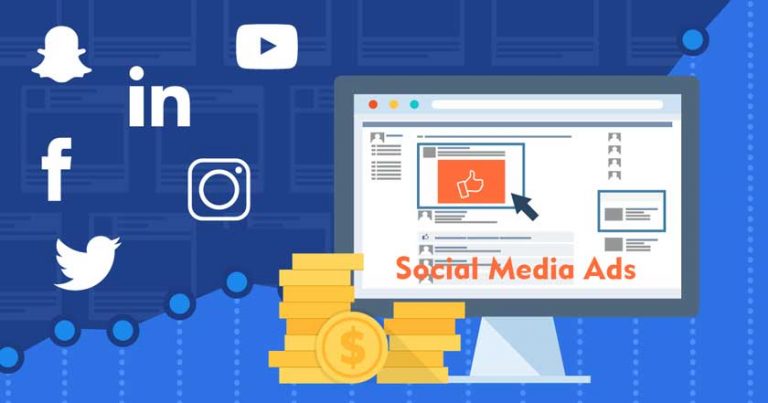Social Media Marketing: The Fundamental Guide
What is social media marketing?
Social media marketing can be described as all efforts made to promote your brand through both paid and organic social media avenues. Social media marketing occurs on a variety of platforms, some of the most prominent B2B ones being: Facebook, LinkedIn, Instagram, and Twitter.
If properly deployed, social media marketing should be an integral part of a comprehensive marketing strategy and should serve to build your brand, better communicate with your audience, and drive your sales and marketing outcomes.
Social media marketing can be broken out into five core pillars:
- High-level strategy
- Planning and publishing
- Listening and engagement
- Analytics and reporting
- Advertising
This chapter of The Comprehensive Guide to Lead Generation will explore how to deploy integrated B2B social strategies that touch on all five of these pillars.
Skip to Social Media Marketing Strategies
Why is social media marketing important?
Social media is the future of collaboration, communication, and socialization. Social media marketing is quite likely a major determiner of all future B2B successes. Here are some of the top reasons why every business should be leveraging social media as part of their marketing and advertising strategy.
1. Your audience is on social
Top social media channels are home to hundreds of millions (if not billions) of monthly active users. Growing an organic audience on some of these platforms should be a chief priority for all B2B marketers, and leveraging paid channels can be a cost-effective and focussed way to further amplify that reach.
Here is a breakdown of social media platform users around the world:

Source: SproutSocial
Though certain platforms cater to slightly different user bases, you can be sure that your audience calls at least a few of these platforms home. For example, if you’re a software company that’s aiming to connect with financial professionals, then LinkedIn is going to be the best vehicle for doing so. However, if you’re a photographer looking to market your work and generate new leads, then Instagram will be a better fit for you.
2. Drive multiple business outcomes
Social networks used to be hubs for people that wanted to connect and share content with their friends. Then businesses realized the potential in connecting with their audiences through these platforms. Today, social networks help businesses do everything from lead generation to customer service.
Here are just a few ways that social media can be used to drive business outcomes:
- Monitoring. Through mention tracking, modern social media platforms (like Facebook) enable businesses to monitor conversations that are happening surrounding their brands so that they can collect feedback, stay relevant, and engage in the discussion.
- Reach. Social media is one of the fastest vehicles for both building and growing an audience. Whether through the use of hashtags/shares in organic marketing or by injecting some cash for paid promotion, social is one of the most cost-effective ways to place your message in front of an interested and engaged audience.
- Insights. Built-in page analytics and ads dashboards allow business accounts to acquire real-time feedback on different messaging, identify top-performing content, and constantly monitor overall performance.
- Support. Business pages have become major focal points for customers that are looking to receive after-purchase support and service. Staying active on these channels is a critical component in executing a comprehensive social media marketing strategy.
3. Build your brand
Brands are the lifeblood of businesses. They allow consumers to build emotional connections with the businesses that they interact with.
Social media is unique because it allows businesses to express more brand attributes than other (more traditional) formats did. Where brands used to be built on radio jingles, newspaper advertorials, and what people had told their friends; social media has since allowed brands to connect with consumers at a greater depth than ever before.
Here are a few reasons why social media is a special branding mechanism:
- Social platforms serve to reinforce brand continuity when properly aligned with web and other consumer-facing media.
- Frequency is a key determiner in shifting consumer attitudes and motivating action, and frequent brand experiences can be created with minimal resources through organic social media marketing and low-cost social media advertising.
- Social media can build trust and communicate a greater degree of authenticity. Stuffy corporate content doesn’t work on social media. Instead, businesses should focus on fostering a strong brand voice, communicating values, sharing cultural content, and readily engaging with consumers.

Source: Instagram @vendasta
4. Social media marketing is cost-effective
By cost, I mean time, resources, and money. In comparison to other programs, social media marketing presents one of the greatest opportunities to optimize all three of these costs.
In terms of time, a HubSpot study determined that 84 percent of marketers were able to significantly increase their website traffic with as little as six hours of social media related labour per week.
In terms of resources, most businesses can build a social media program without the need for any outside technologies or services. However, for those that want to pursue more aggressive social media growth, scheduling software like Social Marketing or Hootsuite can remove a lot of toil for your team. And if your team is still looking for more, you can always hire an agency to fulfill your social media marketing and digital advertising needs. Find out more here.
In terms of direct costs, there are none associated with an organic campaign. However, paid campaigns can easily be scaled to match your budget and demand requirements. In 2020, the average social media advertising spends for B2B businesses ranged anywhere from $200-$50,000.
If properly leveraged, social media is the gateway to stronger client relationships. Being active on these major social media channels is critical not just to drive awareness, but also to provide valuable customer feedback channels, and to drive additional conversions and sales.
5. Lead Generation Happens Here
At the end of the day, the outcome of all B2B marketing and advertising efforts is lead generation. Fortunately, social media is one of the most powerful mediums for achieving this end.
Here are the stats:
- 74 percent of people rely on social networks to help with their purchase decisions.
- 80 percent of B2B leads originate from LinkedIn alone.
- Revenue increases for 24 percent of businesses when leveraging social media for lead generation.
- 53 percent of businesses believe that social media will be the best source of leads in the future.
What is the future of social media marketing?
Social media is one of the most rapidly changing landscapes in the world. Twenty years ago the term had barely been conceptualized. Ten years ago, Facebook ran the world. Today, most consumers subscribe to 9 different social media platforms and spend over two hours per day using those platforms. And new challenger platforms are rapidly emerging (TikTok?).
Three of the most prevalent trends that will be sure to affect the future of social media marketing are as follows.
1. Video dominance
According to a study by Adobe, 52 percent of marketing professionals claim that video content generates the strongest ROI as compared to all other content formats.
Video is the optimal platform for everything from explainer videos, to feature releases, to exclusive behind-the-scenes content, to product testimonials, and everything in between.

Source: Instagram @slackhq
2. Limited accessibility content
Also known as ephemeral content, this is any content that has a limited lifespan or an expiration date. In other words, the usage of story posts on platforms like Facebook, Instagram, Snapchat, and TikTok. Additionally, platforms like LinkedIn, WhatsApp, and Skype are also working on integrating story style features into their product suites.
Ephemeral content is effective because it provokes a sense of urgency in consumers. It also provides a higher involvement marketing format, from which users can interact with custom lenses, GIF integrations, polls, consumer drawing functionality, and more. Additionally, stories allow brands to share more bite-sized content that might not be suitable for full posts, such as brief educational posts, quotes from articles, event promotion, and exciting cultural content.
Deloitte Digital is a brand that has mastered the art of ephemeral content:

Source: Instagram @deloittedigital
3. More influencer marketing
This one might have you rejoicing, or it might have you rolling your eyes. I fall somewhere on the latter side, but the numbers don’t lie.
Here’s what you need to know about influencer marketing:
- It’s a 10 billion dollar industry.
- 63 percent of consumers trust influencer messages more than branded messages.
- In a study conducted by Convince and Convert, 58 percent of participants said that they purchased a product in the past six months as a result of an influencer recommendation.
These numbers are only expected to climb as the purchasing power of Gen Z continues to grow, and these younger consumers continue to embrace influencers wholeheartedly.
Social Media Marketing Strategies
The following chapters will explore the case and strategy for social media marketing on Facebook, Twitter, LinkedIn, Instagram, as well as influencer marketing tactics.







